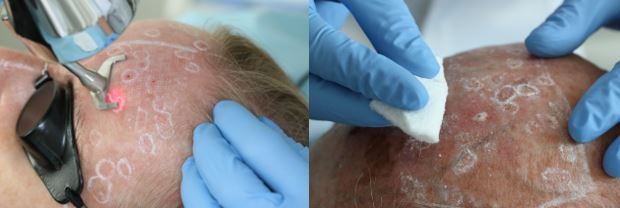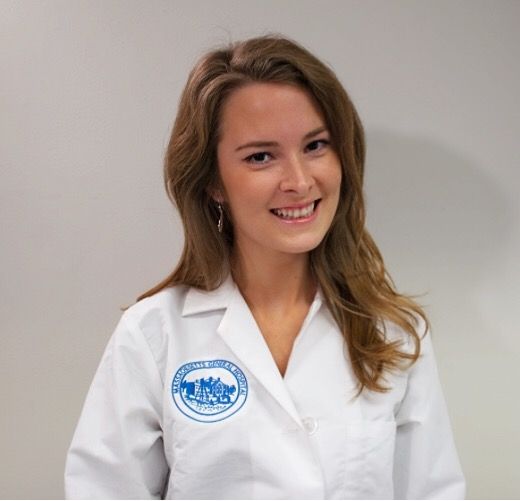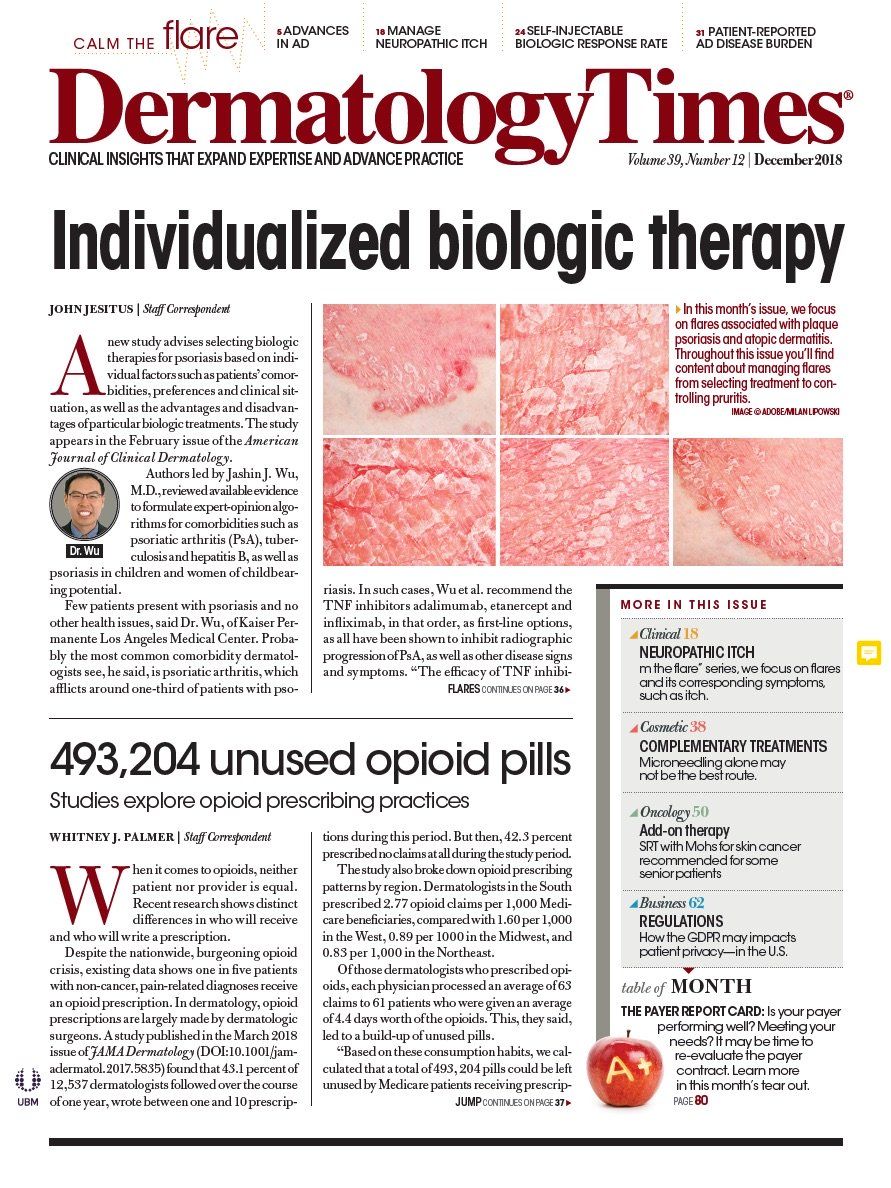- Case-Based Roundtable
- General Dermatology
- Eczema
- Chronic Hand Eczema
- Alopecia
- Aesthetics
- Vitiligo
- COVID-19
- Actinic Keratosis
- Precision Medicine and Biologics
- Rare Disease
- Wound Care
- Rosacea
- Psoriasis
- Psoriatic Arthritis
- Atopic Dermatitis
- Melasma
- NP and PA
- Skin Cancer
- Hidradenitis Suppurativa
- Drug Watch
- Pigmentary Disorders
- Acne
- Pediatric Dermatology
- Practice Management
- Prurigo Nodularis
- Buy-and-Bill
Publication
Article
Dermatology Times
A two-system procedure for clearing actinic keratoses
Author(s):
Study finds daylight photodynamic therapy with ablative fractional laser more effective than with microdermabrasion for treating actinic keratoses with large area field cancerization.
Study finds daylight photodynamic therapy with ablative fractional laser more effective than with microdermabrasion for treating actinic keratoses with large area field cancerization. (Images courtesy of Emily Wenande, M.D., Ph.D.)

Dr. Wenande

For patients with large skin areas affected by actinic keratoses (AK) and severe photodamage, daylight photodynamic therapy preceded by ablative fractional laser as opposed to microdermabrasion was found to be significantly more efficacious in clearing actinic keratoses at three months, according to a prospective, randomized study.
The study, which appeared in the British Journal of Dermatology on August 17, consisted of 18 patients, all of whom were treated in two, side-by-side treatment areas randomized to either microdermabrasion followed by daylight photodynamic therapy (MD-dPDT) or ablative fractional laser followed by dPDT (AFL-dPDT).
AFL-dPDT treated areas achieved an AK clearance rate of 81 percent versus 60 percent for MD-dPDT. Furthermore, AFL-dPDT led to fewer new AKs and superior improvement in dyspigmentation and skin texture.
In an interview with Dermatology Times, co-investigator Emily Wenande, M.D., Ph.D., fellow in the Department of Dermatology at Bispebjerg University Hospital in Copenhagen, Denmark, says the study describes the first head-to-head comparison of the two different physical skin pretreatments – microdermabrasion and ablative fractional laser – as methods to enhance the efficacy of dPDT therapy for AK and severely photodamaged skin.
“In patients with large areas of field cancerized skin and multiple hyperkeratotic AKs, many topical field treatments demonstrate unsatisfactory efficacy, in part due to insufficient penetration of topically applied photosensitizers,” Dr Wenande says. “A range of physical skin pretreatments such as curettage, microneedling, microdermabrasion and AFL have been used in the clinic to enhance photosensitizer delivery during photodynamic therapy. Unfortunately, not enough evidence exists on their relative efficacy or tolerability.”
The study was conducted in the Department of Dermatology at Bispebjerg Hospital between August and November 2016.
For the first time, the investigators demonstrated that AFL-dPDT attains superior clearance of AKs and improved appearance of photodamage/cosmesis compared to MD-dPDT. However, local skin reactions in the days following treatment were also intensified using AFL-dPDT.
“We believe that the study's intra-individual, randomized and blinded design, as well as the use of standardized pretreatment conditions for both AFL and MD, provides an analysis of high scientific quality.” Dr. Wenande says.
Bispebjerg University Hospital was also the site of a previously published a study in JAMA Dermatology in 2017 that compared a range of physical skin pretreatments’ impact on photosensitizer uptake and local skin responses in healthy volunteers.
“In that study, we found that AFL, and to a lesser extent microdermabrasion, provides high protoporphrin (PpIX) fluorescence and more intensified skin reactions compared to pretreatment with microneedles, curettage and nonablative fractional laser,” Dr. Wenande says. “In the current study therefore, we proceeded by examining AFL and microdermabrasion prior to dPDT in patients, since these two strategies were the ‘frontrunners’ of the study in healthy volunteers.”
Based on the previous study, the investigators had an initial indication that AFL might be more effective than microdermabrasion for increasing photosensitizer uptake/effect. “But for improvement in photodamage, we were struck by the noteworthy impact AFL-dPDT had on skin texture and dyspigmentation compared to MD-dPDT,” Dr. Wenande says.
Patients also preferred AFL-dPDT over MD-dPDT because the AFL pretreatment procedure was less painful.
Increased intensity of the local skin responses to AFL-dPDT was however also observed, with three patients treated on the chest developing culture-verified local staph infection.
“Overall, we concluded that while efficacious in patients with difficult-to-treat, severely photodamaged skin and multiple AKs, both MD-dPDT and AFL-dPDT treatments were more aggressive than standard dPDT,” Dr. Wenande says.
Two study limitations are the small sample size and short follow-up time.
Despite dPDT combined with AFL being a potent and effective treatment for AK and photodamaged skin, increased local skin reactions may limit its use in some patients.
“Future studies should pursue adjusting AFL and PDT parameters to maintain a high degree of efficacy with less downtime, in order to target a larger patient population,” Dr. Wenande says.
Dr. Wenande and her colleagues continue research on improving local pharmacological treatments for skin disease. “Our center is one of the primary locations for cutaneous drug delivery studies examining physical skin pretreatment in dermatology,” she says.
DISCLOSURES
Galderma Nordic provided a research grant.
REFERENCES
Wenande E, Phothong W, Bay C, et al. “Efficacy and Safety of Daylight Photodynamic Therapy After Tailored Pretreatment with Ablative Fractional Laser or Microdermabrasion: A Randomized Side-by-Side Single-Blind Trial in Patients with Actinic Keratosis and Large Area Field Cancerization,” British Journal of Dermatology, 2018 August 17. DOI:10.1111/bjd.17096 [Epub ahead of print]
Bay C, Lerche CM, Ferrick B, et al. “Comparison of Physical Pretreatment Regimens to Enhance Protoporphyrin IX Uptake in Photodynamic Therapy: A Randomized Clinical Trial,” JAMA Dermatology, 2017;153(4):270-278. DOI:10.1001/jamadermatol.2016.5268






